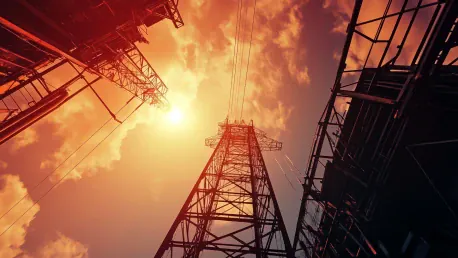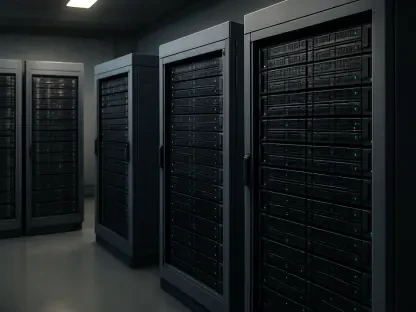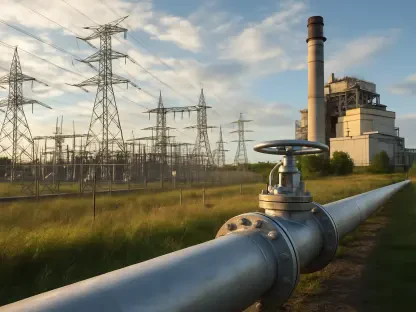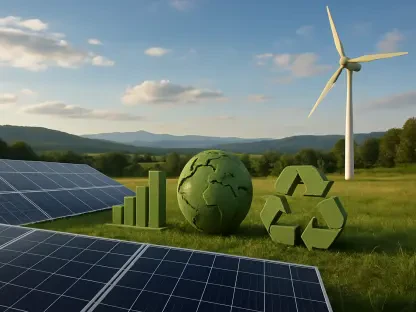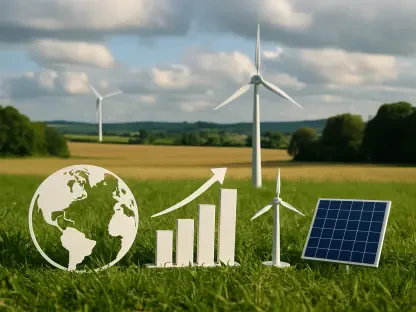In the dynamic world of energy management and investment, Christopher Hailstone stands out as an expert with a wealth of experience in renewable energy and electricity delivery. His insights into grid reliability and security make him a valuable resource in navigating the complexities of modern energy infrastructure.
Could you explain what the term “electricity supercycle” refers to?
An electricity supercycle represents a significant and sustained period of growth and transformation in the global electricity market. This is driven by an increasing shift toward decarbonization and electrification, which involves moving away from fossil fuel-based energy to more sustainable sources like renewables. It encompasses efforts across the entire electricity value chain, from generation to distribution.
What factors are contributing to this potential supercycle?
Several factors are at play here, including the push for greener energy sources, government policies aimed at reducing carbon emissions, and the technological advancements that make renewable energy more viable and efficient. The rising demand for electricity as more sectors electrify, such as transportation and heating, also fuels this supercycle.
How long is this supercycle expected to last?
Predicting the exact duration can be challenging, but many analysts believe this supercycle could span several decades. The massive ongoing investments in grid infrastructure and renewable energy projects suggest that we’re at the early stages of a long-term transformation.
What role does electrification play in the push for decarbonization?
Electrification is crucial because it allows us to replace fossil fuels with cleaner electricity in various applications. This transition helps reduce greenhouse gas emissions, which are a significant driver of climate change. For instance, electric vehicles, heat pumps, and electric industrial processes are all part of this move toward a low-carbon future.
What are some examples of electrification efforts currently underway?
Some notable examples include the widespread adoption of electric vehicles by consumers and industries, the transition to electric heating systems, and industrial sectors exploring electric alternatives for processes like steelmaking. These efforts are collectively aimed at reducing our carbon footprint.
How does electrification impact the entire electricity value chain?
It profoundly affects every segment, from power generation, where there’s increased demand for renewable sources, to the transmission and distribution networks that need significant upgrades to handle new loads and intermittent sources like solar and wind. It also impacts storage solutions, which are critical for managing the variability of renewable energy.
How has the market value of Mitsubishi Heavy Industries been affected by this trend?
Mitsubishi Heavy Industries has seen its market value double recently, partly due to the strong performance of its energy business. This growth can be attributed to the increasing demand for energy solutions that align with decarbonization goals, making the company an attractive option for investors.
What has driven the strong performance of its energy business?
The main drivers include their strategic focus on developing and deploying renewable energy technologies and systems that support the evolving needs of the energy market. Their investments in innovative solutions have positioned them well to capitalize on the ongoing energy transition.
What are the main drivers of the growing energy needs globally?
Economic growth in emerging markets, particularly in countries like India, China, and across Southeast Asia, significantly contributes to increasing energy needs. Additionally, the rapid pace of digitalization and the corresponding need for data centers are accelerating global energy demand.
How is economic growth in emerging markets contributing to this increased demand?
Economic growth typically leads to increased industrial activity, urbanization, and higher standards of living, all of which drive up energy consumption. These markets are investing heavily in grid infrastructure to support their expanding economies and growing populations.
What impact is digitalization having on energy consumption?
Digitalization drives up energy consumption significantly due to the proliferation of data centers, the Internet of Things, and AI. These technologies require substantial processing power, which translates to greater energy needs, leading to higher capital spending on power infrastructure.
What challenges are currently being faced by aging electricity grids in developed countries?
Aging grids are struggling to keep pace with rising energy demands and the integration of renewable energy sources. Many existing infrastructures are outdated, leading to bottlenecks that slow the adoption of new technologies and the efficient distribution of energy.
How are grid bottlenecks affecting the capacity to integrate renewable energy sources?
Grid bottlenecks limit the ability to connect new renewable energy projects like wind and solar farms to the grid. This results in wasted potential energy and hinders the overall adoption of green technologies needed to meet climate goals.
What investments are needed to update transmission and distribution networks?
Significant investments are required to modernize these networks, including the deployment of smart grid technologies, new substations, and enhanced transmission lines. These updates will improve reliability, reduce losses, and facilitate the integration of renewable sources.
How can battery storage solutions help manage excess renewable energy?
Battery storage is essential for storing surplus energy generated from intermittent sources like solar and wind. It helps balance supply and demand, ensuring that energy is available even when generation is low, thus stabilizing the grid.
Why is managing intermittent energy supplies crucial for the grid?
Intermittency poses challenges in maintaining a consistent and reliable energy supply. Efficiently managing these fluctuations ensures grid stability, prevents outages, and maximizes the efficiency of renewable energy use.
What opportunities does investing in the world’s electricity grids offer to private and public investors?
Investing in electricity grids offers substantial opportunities for returns due to the essential and growing nature of energy infrastructure. Modernizing these grids is critical for supporting economic development, enabling renewable energy integration, and enhancing overall grid resilience.
What role does collaboration between policymakers, grid operators, and energy producers play in creating an efficient power system?
Collaboration is vital in aligning the goals and resources necessary for developing a robust power system. Policymakers can create favorable regulations, grid operators can implement technological solutions, and energy producers can invest in clean energy projects to collectively enhance system efficiency and reliability.
How can an efficient and resilient power system create an attractive environment for investors?
An efficient and resilient power system minimizes risks such as outages and ensures consistent returns. It also demonstrates the potential for long-term growth driven by renewable energy adoption, making it an appealing investment for both private and public entities.
What does the International Energy Agency (IEA) estimate about investment in grid infrastructure?
The IEA estimates that investment in grid infrastructure reached nearly $400 billion in 2024. They project that this figure needs to rise to around $600 billion annually by 2030 to meet global climate targets and support the growing demand for electricity.
How has this investment figure changed from previous years?
The investment figure has increased significantly from previous years. This rise reflects the urgency and scale of the ongoing efforts to modernize and expand global electricity grids in response to new energy demands and decarbonization goals.
What are the projected investment needs by 2030 to meet climate targets?
The projected investment needs by 2030 are substantial, requiring around $600 billion annually. This level of investment is crucial to develop the necessary infrastructure to support renewable energy integration and meet international climate commitments.
Can you elaborate on the economic needs of India, China, and ASEAN nations for grid infrastructure investment?
These regions face staggering investment requirements due to their rapid economic growth and increasing energy demands. India and China alone will need several hundreds of billions of dollars over the next five to seven years to upgrade their grid infrastructure.
How much investment do India and China require over the next five to seven years?
India and China will need significant investments, potentially reaching several hundreds of billions of dollars. These funds are necessary to build out and modernize their electricity grids to support their burgeoning economies and energy transitions.
How much annual investment is needed by ASEAN nations by 2035?
ASEAN nations will require around $22 billion annually by 2035 to ensure their electricity networks are modernized and interconnected, supporting both economic development and the transition to cleaner energy sources.
How is the exponential need for processing power driving capital spending in data centers?
The exponential need for processing power, driven by advancements in digitalization and AI, demands significant investment in data center capacity. This surge pushes capital spending to new heights, surpassing $2 trillion by 2029.
What are the predicted figures for data center capacity expansion until 2030?
Data center capacity is expected to expand by up to 22% year-on-year until 2030. This relentless growth reflects the increasing demand for cloud services, AI, and digital technologies across various sectors.
What is the primary constraint for the expansion of AI in terms of power?
Power availability is the primary constraint for AI expansion. The energy-intensive nature of AI and data processing means that reliable and scalable power infrastructure is essential to support the growing needs of these technologies.
What is your forecast for the future of energy infrastructure and investment?
Looking ahead, the future of energy infrastructure and investment appears robust. As the world continues to prioritize decarbonization and technology advances, we can expect sustained growth in renewable energy projects, grid modernization, and storage solutions. This progress will likely attract continuous investment, driving innovations and ensuring a more resilient, efficient energy landscape.
